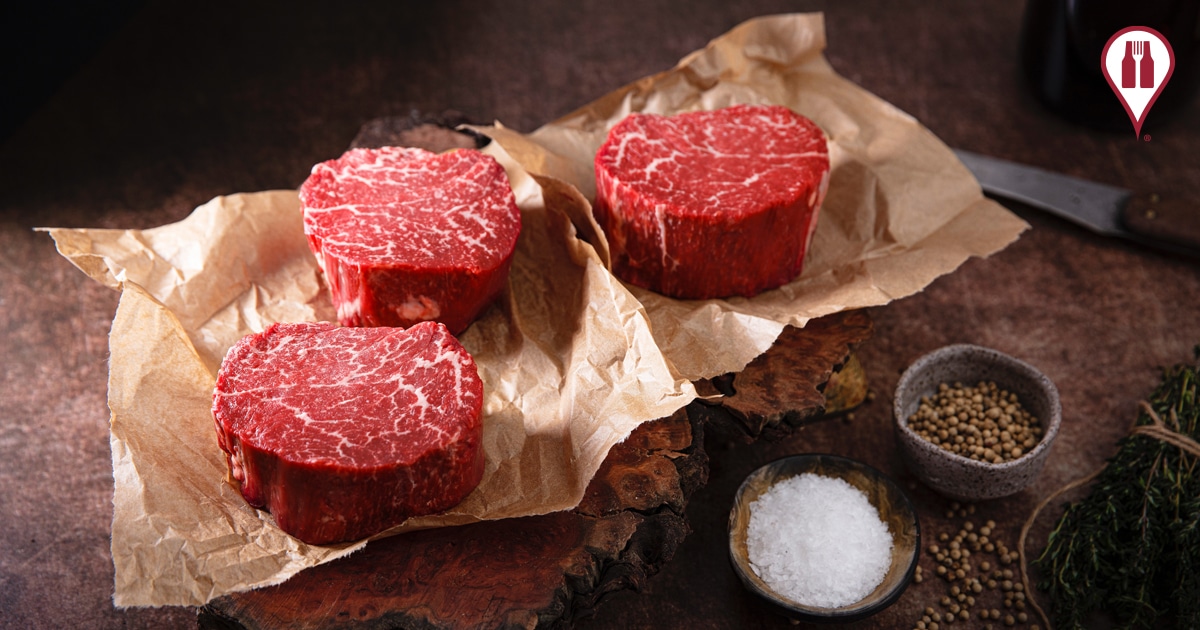So, What’s the beef: Grass Fed vs. Grain Fed Beef, Which is better?
There are several possible production programs for beef cattle. To settle the argument once and for all, we present a comparison between two types of beef production: grass fed beef and grain fed beef.
In 2019, the United States consumed around 27 billion pounds of beef according to Statista. If we do the math, this is probably around 36 billion smoked rib eye steaks ordered at St. Elmo Steak House every year (or billions of billions of burger patties served at McDonald’s). Unsurprisingly, the US ranked second in beef consumption all over the world, just a few meat breaded cutlets behind Argentina.
“Roast beef, medium, is not only a food. It is a philosophy.”
-Edna Ferber, American novelist
While most nutritionists are beefing about the alarming rate of meat consumption, the beef industry is still fenced in an ongoing conundrum of how to raise cows.
How is Grass Fed Beef Produced?
All cows are raised similarly during the first six months. That is, they feed on their mother’s milk and are allowed to graze and forage for fresh food.
In search of better and less chemically contaminated meat, farming experts have coined several terminologies to describe how meat is produced. However, these terms are still unregulated. For example, the term “grass-fed” should not be confused nor interchanged with “grass-finished.”
According to consensus, grass-fed refers to cows that were fed a grass diet for most of their life. Contrary to popular belief, they don’t necessarily need to feed merely on grass. They may have also been given grass substitutes, such as alfalfa, or other supplementary food. In most cases, grass-fed cattle were also given grains and grain by-products. In fact, some grass-fed cows are brought to feedlots to be fed with grain in order to gain weight before they are slaughtered. In such cases, the term “grass-fed, grain-finished” more accurately describes how the cow was raised. Nevertheless, grass-fed cows maintained a natural diet based on grass and forage most of their life.
On the other hand, grass-finished cows are fed nothing but grass and plants for their entire lifespan.
How is Grain Fed Beef Produced?
Grain-fed cows are alternatively called “conventionally-raised” cows. Once they are weaned off their mother’s milk, at around 6–10 months, they are then moved to feedlots to be raised on a grain-based diet. These cows are mostly sent to large feedlots, known as concentrated animal feeding operations (CAFOs), where they are confined in stalls for at least 45 days per year. Though there is no industry-regulated definition, grain-fed cows generally refer to those fed an unnatural diet based on corn, soy, and distiller grains. In some regions, a cow must be fed grains or grain by-products for over 60 days to be considered grain-fed.
What Are the Differences in Nutritional Composition?
The adage “you are what you eat” is also true to animals. The way cows are raised—their diet and environment, as well as stress levels—affect the quality and nutritional composition of their meat.
Since grass-fed cows are raised on a natural-based diet and were mostly allowed to roam freely on spacious pastures, grass-fed beef is a richer source of vitamin E and beta carotene (a carotenoid precursor to vitamin A). Though grass-fed and grain-fed beef contain almost similar amounts of omega-6, grass-fed beef has five times more omega-3 content. Grass-fed beef also has twice as much conjugated linoleic acid (CLA), a fatty acid known to fight cancer.
Grain-fed cows are usually administered with antibiotics and hormones, such as testosterone and estrogen, to boost their growth. Consuming too much meat filled with hormones is associated with increased health risks. Furthermore, grain-fed beef has a higher monounsaturated fat content than grass-fed.
Which Beef is More Nutritious?
Both grass-fed and grain-fed beef are great sources of vitamin B12, B3, and B6. They are also rich in minerals, like iron, selenium, and zinc. Both types of beef also contain important nutrients that are good for the muscles and brain, such as protein, creatine, and carnosine.
However, since grass-fed beef has less fat and more omega-3, vitamin E, beta carotene, and CLA, health-conscious eaters prefer grass-fed over grain-fed beef.
Are There Differences in Taste Between Grass Fed and Grain Fed Beef?
For true-blue beef connoisseurs (especially steak enthusiasts), grass-fed and grain-fed beef have their distinct tastes. And in a gourmand’s world, healthy doesn’t always translate to delicious.
According to a case study published in 2014, most U.S. consumers prefer the taste of grain fed over grass fed beef. The participants of the flavor panel described grass-fed beef as “lacking beef flavor.” Grass fed beef has been said to have an intense dairy–milky tang, with a soured dairy taste and other off-flavors. This difference in taste can be attributed to the fatty acid profile of grass-fed beef.
However, taste always boils down to preference and cultural norms.
For other consumers, grass-fed beef has a more complex and natural flavor than grain-fed, owing to the cow’s varied natural-based diet. Since it has lesser fat content, grass-fed beef is also leaner and chewier.
But sometimes, the tongue wants what it wants. Grain-fed beef is mostly rated with the highest grades compared to grass-fed beef. In cooking a steak, for example, the quality of the beef does not merely depend on the taste, but also the texture. Since grain-fed beef has more fat content, it creates a beautiful marbling that can make or break the perfect steak. (Beef marbling is the white flecks and streaks of fat within the meat.) The marbling keeps the meat’s moisture and prevents natural juices from evaporating as the meat is being cooked. This results in a juicer and a more tender steak experience. The fat content of grain-fed beef also gives it a buttery flavor.
Which Beef is Organic?
Whether it’s grass-fed or grain-fed, organic beef has little to do with the cow’s diet. Both types of beef can be organic, depending on the quality of their feed.
According to the USDA’s criteria, organic beef must be sourced from cows that are reared in an environment that accommodates their natural behavior, are fed a 100% organic diet and are not given antibiotics or hormones throughout their lifespan. That said, organic cows can also be raised on an unnatural yet organic grain diet and even be kept in feedlots.
Which Beef is More Expensive?
Health is wealth. This is sometimes the reason why nutritious food costs more than the standard supermarket quality.
Based on the price reports by the USDA in early 2021, a grass-fed beef tenderloin costs $17–$24 per pound, while grain-fed beef tenderloin costs $5.99–$15.99 per pound. If you’re planning on making a garlic butter sirloin for dinner, grass-fed sirloin steak costs $12.49–$22.19 per pound, while its grain-fed counterpart costs $3.99–$5.49 per pound. Comparing another beef cut, grass-fed brisket is priced at $8–$12 per pound, while grain-fed brisket typically costs $3.29 per pound.
The reason why grass-fed beef is pricier than grain-fed is mainly due to the producer’s profit margin. While grain-fed cows reach slaughter weight between 15 and 22 months old, it takes around 20 to 26 months to take a grass-fed cow from farm to fork. This means less meat to sell for grass-fed beef producers.
So, Which Beef is Better?
With growing public health consciousness, the game of beef (and meat, in general) contributes to the ongoing discourse on diet and healthy living. Judging beef by its color and marbling may no longer suffice. The “steaks” are high: texture, taste, nutrition, and wallet all come into play. Ultimately, choosing which type of beef to use for tonight’s beef bourguignon boils down to your preference, healthy eating habits, and budget.




